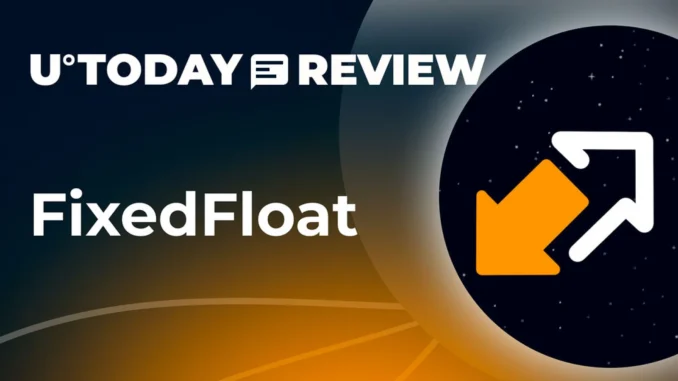
In the context of finance, the terms “fixed” and “float” are fixedfloat commonly associated with the nature of interest rates, exchange rates, or even certain types of investment products. When combined into a concept such as “fixed float,” it takes on an even more nuanced meaning. This term is typically used to describe a hybrid financial arrangement that incorporates both fixed and floating elements, giving investors or institutions the flexibility to manage risks and rewards across different market conditions. Let’s explore what fixed float means, its applications, and its implications in modern finance.
1. What is Fixed Float?
“Fixed float” is an amalgamation of two opposite features: the stability of a fixed rate and the adaptability of a floating rate. It can be applied to various financial instruments, most notably in the realm of interest rates and currencies.
- Fixed Rate: A fixed rate refers to an interest rate or price that remains constant for a specified period, regardless of market fluctuations. Fixed-rate loans, for instance, guarantee that the borrower will pay the same rate of interest throughout the term of the loan.
- Floating Rate: In contrast, a floating rate fluctuates in line with the market. Often pegged to a benchmark interest rate such as the LIBOR (London Interbank Offered Rate) or SOFR (Secured Overnight Financing Rate), a floating rate can change over time, meaning borrowers or investors may face varying payments or returns depending on market movements.
When these concepts are blended into a “fixed float” arrangement, the financial product can offer a combination of predictability and flexibility. This approach can be seen in various scenarios, such as in hybrid loans, investment products, and currency exchange strategies.
2. Applications of Fixed Float in Financial Markets
a) Fixed Float Loans and Mortgages
One of the most common places where the fixed float structure is seen is in loans or mortgages. Some borrowers opt for a hybrid loan, where the initial interest rate is fixed for a certain period (for example, 5 or 10 years) before transitioning to a floating rate. This structure allows borrowers to enjoy the stability and predictability of fixed rates initially, offering comfort during the early years of the loan. After the fixed period expires, the interest rate switches to a floating rate, which could be beneficial if market rates decrease but might increase if the rates rise.
Example: A 5/1 adjustable-rate mortgage (ARM) might have a fixed interest rate for the first five years, after which it adjusts annually based on prevailing interest rates.
b) Currency Swaps
In foreign exchange markets, fixed float structures are often used in currency swaps. A currency swap involves exchanging one currency for another with the agreement to reverse the exchange at a later date. One party might agree to exchange a fixed interest rate on one currency for a floating interest rate on another. These types of swaps allow institutions to manage their exposure to fluctuations in currency and interest rates while ensuring they can access capital in the desired currencies.
c) Interest Rate Swaps
Another common use of fixed float arrangements is in interest rate swaps. In such an agreement, two parties agree to exchange fixed interest rate payments for floating rate payments (or vice versa) based on a notional amount. These swaps allow entities to hedge against interest rate movements or speculate on future changes in rates. For instance, a company that holds floating-rate debt might enter into an interest rate swap to convert it to a fixed-rate exposure, thereby mitigating the risk of rising rates.
d) Convertible Bonds
Convertible bonds offer another example of a hybrid financial product where investors receive fixed interest payments but have the option to convert the bond into equity if the company’s stock performs well. While the fixed component is the bond’s interest rate, the potential to convert the bond introduces an element of “floating” exposure to the company’s stock price, allowing investors to benefit from future growth.
3. Benefits of Fixed Float
The combination of fixed and floating elements offers several advantages, particularly in risk management:
- Predictable Cost: The fixed part of the arrangement provides a degree of certainty regarding future payments or costs, which is valuable for budgeting and planning purposes. This is particularly beneficial for businesses that need to manage cash flow effectively.
- Risk Mitigation: The floating component introduces flexibility, enabling the party involved to benefit from favorable market conditions, such as lower interest rates. This can be an attractive feature when rates are anticipated to decline, allowing for potentially lower costs over time.
- Flexibility: Fixed float structures can be customized based on the investor’s or borrower’s needs, striking a balance between stability and adaptability. This flexibility allows participants to hedge against various financial risks, making these instruments attractive to institutions and individuals alike.
4. Risks of Fixed Float
While fixed float instruments can provide stability and flexibility, they come with certain risks:
- Interest Rate Risk: The floating component of a fixed float structure exposes participants to potential market fluctuations. If interest rates rise, those relying on floating rates could face higher payments in the future, leading to financial strain.
- Complexity: These hybrid financial products are often more complex than purely fixed or floating products. The terms and conditions, particularly regarding how the transition occurs between fixed and floating rates, require careful consideration and can be difficult to understand.
- Uncertainty in Transition: If a loan or mortgage shifts from a fixed rate to a floating rate, there is a degree of uncertainty involved, particularly in volatile market conditions. If the fixed-rate period is too short, the switch to a floating rate could result in a significant increase in payments, which might not be manageable.
5. Fixed Float and Economic Conditions
The success of a fixed float arrangement is often dependent on prevailing economic conditions. In low-interest-rate environments, borrowers might prefer to lock in a fixed rate for longer periods to avoid rising rates in the future. Conversely, in high-interest-rate conditions, investors and borrowers might seek the floating element to capitalize on potential decreases in rates.
The balance between fixed and floating components allows financial institutions to adapt their strategies according to shifting economic climates, and it enables investors to strike a balance between risk and return.
Conclusion
The fixed float structure offers a hybrid solution that combines the best of both worlds—the stability of a fixed rate and the flexibility of a floating rate. Whether used in loans, mortgages, swaps, or bonds, this approach helps businesses and individuals manage risk while optimizing their financial exposure. However, it is essential for those considering these products to thoroughly understand the potential risks involved, especially concerning interest rate movements and the terms of the transition between fixed and floating components. With careful planning and a solid grasp of market conditions, a fixed float strategy can be an effective tool in navigating the complexities of today’s financial landscape.
